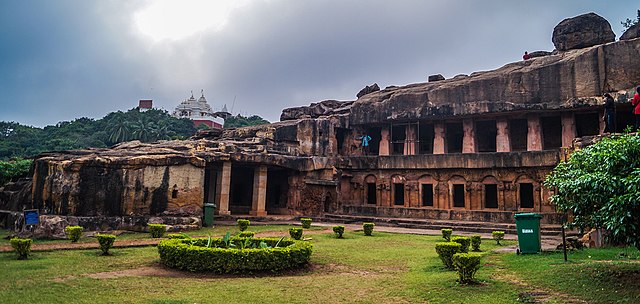Bhubaneswar is the capital and largest city of the Indian state of Odisha. The region was historically described as Ekamra Khetra (area (kshetra) adorned with mango trees (ekamra)).
Bhubaneswar is named the “Temple City” because of the 700 temples which once stood there. In modern times, it has emerged as an education hub and an attractive business destination.
History of Bhubaneswar in Ancient India

Bhubaneswar stands near the remains of Sisupalgarh, the ancient capital of the former province of Kalinga. Dhauli, near Bhubaneswar, was the site of the Kalinga War (c. 262-261 BCE), where the Mauryan emperor Ashoka attacked and annexed Kalinga. One of the most complete edicts of the Mauryan Emperor, Ashoka, dating from between 272 and 236 BCE, remains carved in rock, 8 kilometers (5.0 mi) to the southwest of the modern city.
After the decline of the Mauryan empire, the area came under the rule of the Mahameghavahana dynasty, whose most well-known rule is Kharavela.
His Hathigumpha inscription is located at the Udayagiri and Khandagiri Caves near Bhubaneswar. The area was ruled by several dynasties, including Satavahanas, Guptas, Matharas, and Shailodbhavas.
In the 7th century, Somavamshi or Keshari dynasty built their kingdom in the area and built several temples. After the Kesharis, the Eastern Gangas ruled the Kalinga area until the 14th century CE. Their capital Kalinganagara was found in present-day Bhubaneswar City.
After them, Mukunda Deva of the Bhoi dynasty – the last Hindu ruler of the area until the Marathas – produced several religious buildings in the area. Most of the older temples in Bhubaneswar were built between 8th and 12th centuries, under Shaiva influence.
The Ananta Vasudeva Temple is the only old temple of Vishnu in the city. In 1568, the Karrani dynasty of Afghan origin gained control of the area. During their reign, most of the temples and other structures were destroyed or disfigured.
History of Bhubaneswar in Medieval and Modern India
In the 16th century, the area came under pachamani Mughal control. The Marathas, who succeeded the Mughals in the mid-18th century, supported pilgrimage in the region.
In 1803, the area came under British colonial rule and was part of the Bengal Presidency (until 1912), Bihar and Orissa Province (1912-1936), and Orissa Province (1936-1947).
The capital of the British-ruled Orissa Province was Cuttack, which was exposed to floods and suffered from space constraints. Because of this, on 30 September 1946, a proposal to move the capital to a new capital was founded in the Legislative Assembly of the Odisha Province.
Bhubaneswar after Independence
After the independence of India, the foundation of the new capital was laid by Prime Minister Jawaharlal Nehru on 13 April 1948. The name of the new capital came from “Tribhubaneswara” or “Bhubaneswara” (literally “Lord of the Earth”), a name of Shiva, the deity of the Lingaraja temple.
The Legislative Assembly of Odisha was shifted from Cuttack to Bhubaneswar in 1949. Bhubaneswar was built as a modern city, designed by German architect Otto Königsberger with wide roads, gardens, and parks. Though part of the city followed the plan, it grew rapidly over the next few decades, outstripping the planning process.



One thought on “History of Bhubaneswar – Temple City of India”